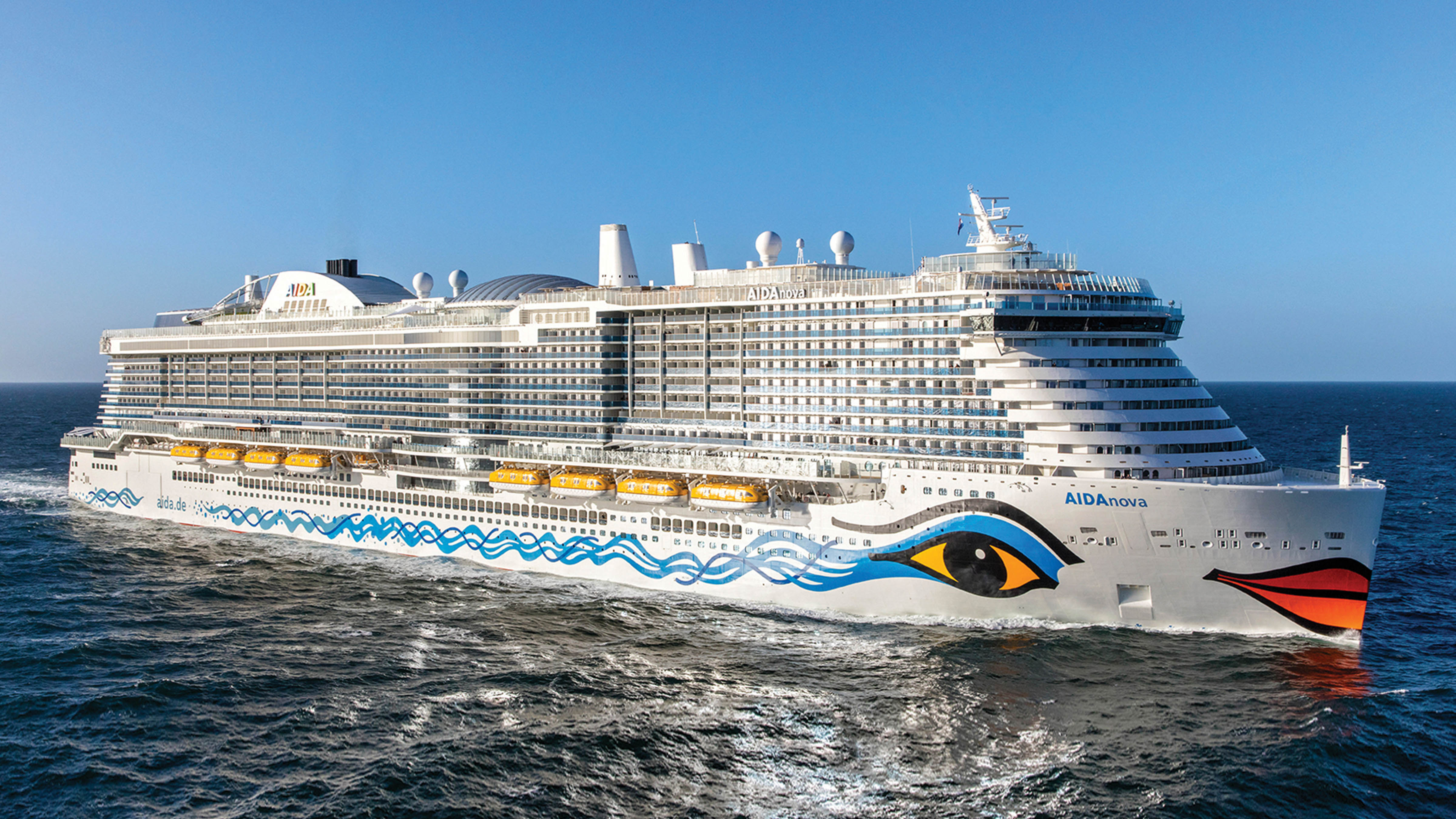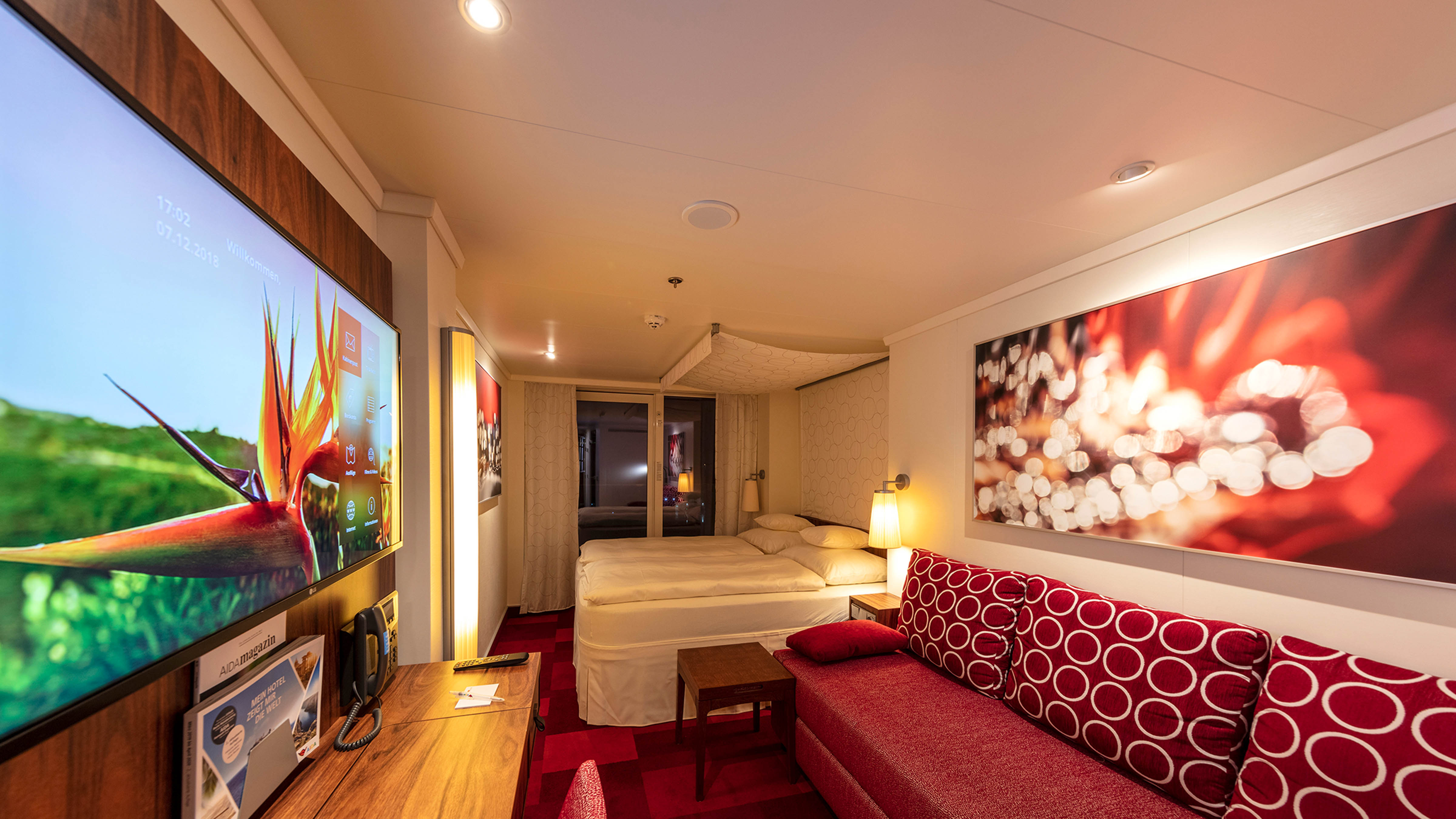Like every other sector of the travel and tourism industry, cruise ships suffered mightily during the early waves of the COVID-19 pandemic. As a consequence of serving as ground zero for some of the first major outbreaks, affected cruise ships were turned into quarantine centers and triages for passengers overnight. And as countries around the world tightened travel restrictions, cruise ships were at the top of the list.
While ridership had increased nearly 70% in the previous decade—from about 18 million passengers in 2009 to just under 30 million in 2019—those numbers nosedived to depths not seen since the 1990s, as ports around the world closed. After disembarking their passengers, many of the 300-plus active cruise ships anchored in clusters off coastlines around Florida, the Bahamas, and the Caribbean with skeleton crews kept onboard for maintenance.
But tourism has reemerged, returning millions of passengers to cruise liners. The industry is now posting strong numbers and is forecasted to recover to pre-pandemic passenger levels in just a few seasons.
That’s good news for AV integrators, as cruise lines and onboard tech teams return their focus from crisis mode to developing and enhancing the customer experience. That includes responding to passengers’ newly acquired entertainment habits—namely, an increased preference for streaming TV, a sector that ballooned to more than 1 billion subscriptions worldwide during the pandemic.
New Customer Expectations
Customer and end user expectations on cruise ships have risen in kind, said Eleuterio Fernandes, director of accommodation at VITEC (formerly Exterity), an IPTV, streaming video, and digital signage provider that serves the cruise line industry.

“We are coming now into increasing demand for on-demand services like Netflix or HBO,” Fernandes said. Passengers who got used to over-the-top TV during the pandemic “are now coming onboard saying that they want to have the same [amenities]. Those are trends that we have to adjust to for cruise liners and passengers.”
IPTV was a central piece of a solution VITEC provided to AIDA, a cruise line based in the Baltic seaport of Rostock, Germany, that carries 750,000 passengers annually across its fleet of 13 ships. AIDA enlisted the company during the pandemic-forced downtime of 2020 to upgrade the in-cabin entertainment on six of its ships, including the flagship IDAnova—a whopping 183,900-metric-ton vessel that carries up to 5,200 travelers, making it one of the world’s largest passenger ships.
With thousands of passenger and crew cabins on each vessel, and 11,000 cabins served in total, ensuring the infrastructure could handle the amount of requests the servers on each ship were receiving was a high priority. Through the VITEC ArtioView IPTV portal, viewers now have hundreds of HD international channels, as well as movies and on-demand TV content.

“The TV and video channels are delivered over multicast, so it comes in satellite TV and goes to a headend, which is also a VITEC product, in a server room,” explained David Peat, VITEC’s head of deployments. “Satellite TV gets distributed over IP multicast, so there’s probably about 100 TV channels. The scalability of that is pretty much infinite when you use multicasting. The network will deliver that traffic to the end points.”
['Alexa, Play Vacation Mode'—Amazon, LG Collaborate on Hotel TV Experience]
The client isn’t locked into providing a fixed slate of channels and streaming apps, though, and the on-demand options are not based on any particular cabin or group of cabins. The ability to create multiple profiles gives AIDA an opportunity to reward VIP customers, for example, with additional channels and services. And crew members, whose lives onboard the ships can be hectic, have the ability to catch up on the previous two days of TV as their schedules allow.
More Than On-Demand
The ArtioView system also powers digital signage throughout the ships in areas like reception and lounges, which can carry news channels, weather updates, event information, and live sports events. “In public areas, our system is there to provide live TV in bars and signage-type stuff, so maybe news items or what time the restaurants are opening," Peat added. "That’s displayed on some of our screens on the ship, as well.”
[Editorial: Digital Signage Future Is Bright]
Once the headend/encoder picks up the stream and converts it to an IPTV stream, it becomes a channel on the IP system, same as a live TV channel. Through an application on the VITEC server, the client has the ability to distribute individual channels to individual endpoints, whether that means passenger cabins or a restaurant. For global announcements and emergency situations, ship staff have the ability to automatically mute all TVs. “I use what we call signage as a channel,” Peat added. “Essentially, it’s an MPEG transport over IP multicast."

Interactive features on the in-cabin display screens allow passengers to view their billing statement and see how much money they have spent, and also book off-ship excursions in the next port of call.
So, how much space does all this command on a cruise ship whose weight and storage capabilities are paramount? Not a lot—Peat said the VITEC equipment commands just 8 RU.
“There is a server room that’s got all the physical headend current, so that’s in what is called the broadcast center,” said Peat. “The virtual infrastructure is in the IT server, so it’s in a different place. And to manage the system you connect into that server, and you can do that from anywhere … and then control the system from there.”
[Go Cruising: LG Showcases Digital Displays at Seatrade Cruise Global 2022]
When working with cruise ships, Eleuterio advises integrators to be certain they have anticipated and met every need before the ship leaves port. Opportunities to make modifications are few and far between once a ship sets sail.
“Cruises are different clients than anyone else,” Eleuterio said. “A very important point is to give reliable solutions and reliable support, because the cruise lines are not available 24/7. There are times when they have no passengers and times when they have, depending on the size of the cruise, from a thousand to three or four thousand passengers at the same time demanding services.
“So, it’s a mix of state-of-the-art technology and entertainment, but at the same time the reliable solution and support that makes the solution and the ‘wow’ factor a workable solution. Because if it doesn’t work, the ‘wow’ factor will not be important.”
